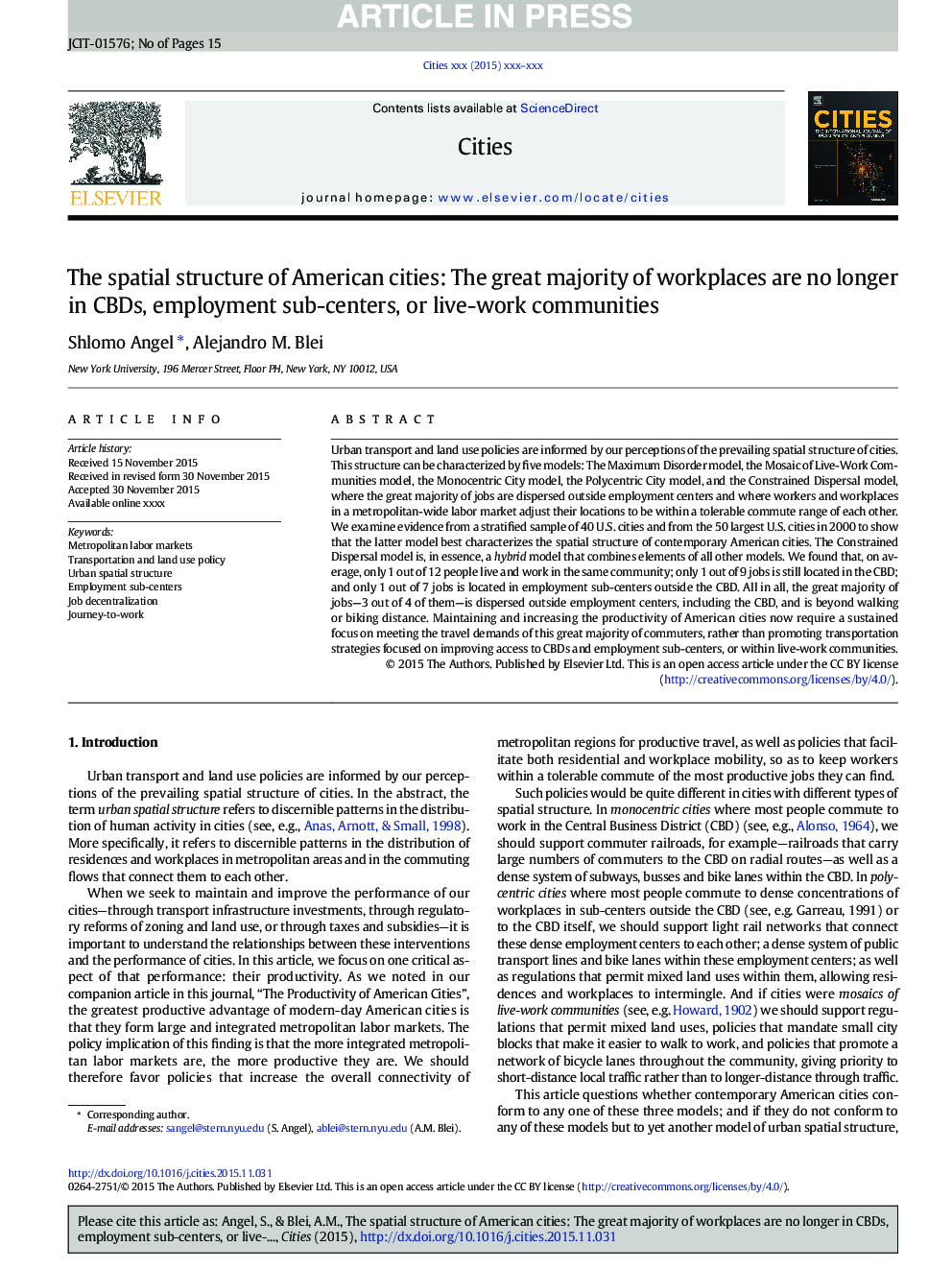| کد مقاله | کد نشریه | سال انتشار | مقاله انگلیسی | نسخه تمام متن |
|---|---|---|---|---|
| 7418339 | 1482345 | 2016 | 15 صفحه PDF | دانلود رایگان |
عنوان انگلیسی مقاله ISI
The spatial structure of American cities: The great majority of workplaces are no longer in CBDs, employment sub-centers, or live-work communities
دانلود مقاله + سفارش ترجمه
دانلود مقاله ISI انگلیسی
رایگان برای ایرانیان
موضوعات مرتبط
علوم انسانی و اجتماعی
مدیریت، کسب و کار و حسابداری
گردشگری، اوقات فراغت و مدیریت هتلداری
پیش نمایش صفحه اول مقاله

چکیده انگلیسی
Urban transport and land use policies are informed by our perceptions of the prevailing spatial structure of cities. This structure can be characterized by five models: The Maximum Disorder model, the Mosaic of Live-Work Communities model, the Monocentric City model, the Polycentric City model, and the Constrained Dispersal model, where the great majority of jobs are dispersed outside employment centers and where workers and workplaces in a metropolitan-wide labor market adjust their locations to be within a tolerable commute range of each other. We examine evidence from a stratified sample of 40 U.S. cities and from the 50 largest U.S. cities in 2000 to show that the latter model best characterizes the spatial structure of contemporary American cities. The Constrained Dispersal model is, in essence, a hybrid model that combines elements of all other models. We found that, on average, only 1 out of 12 people live and work in the same community; only 1 out of 9 jobs is still located in the CBD; and only 1 out of 7 jobs is located in employment sub-centers outside the CBD. All in all, the great majority of jobs-3 out of 4 of them-is dispersed outside employment centers, including the CBD, and is beyond walking or biking distance. Maintaining and increasing the productivity of American cities now require a sustained focus on meeting the travel demands of this great majority of commuters, rather than promoting transportation strategies focused on improving access to CBDs and employment sub-centers, or within live-work communities.
ناشر
Database: Elsevier - ScienceDirect (ساینس دایرکت)
Journal: Cities - Volume 51, January 2016, Pages 21-35
Journal: Cities - Volume 51, January 2016, Pages 21-35
نویسندگان
Shlomo Angel, Alejandro M. Blei,